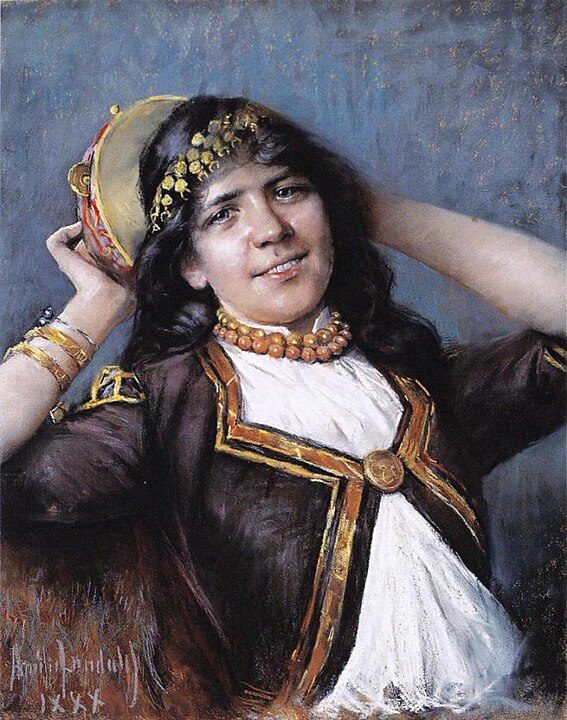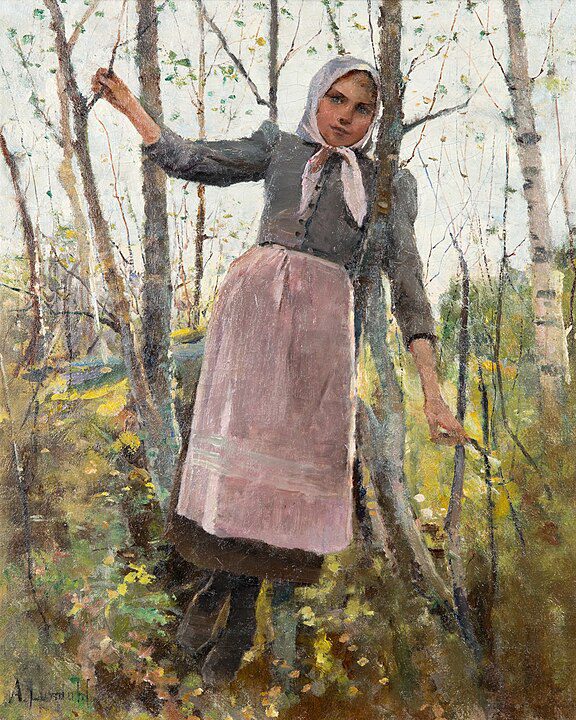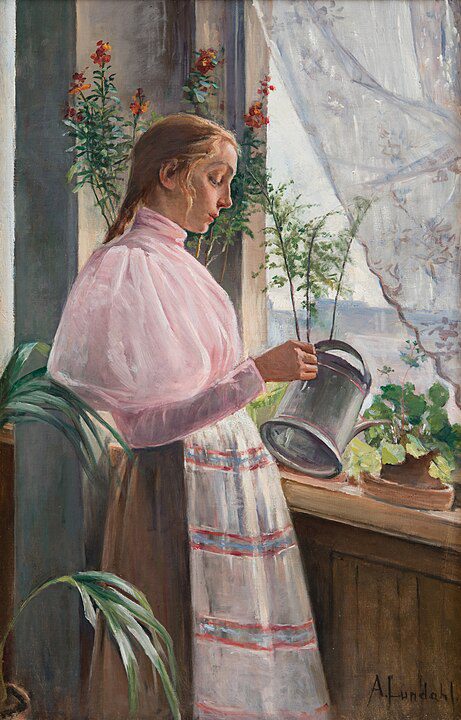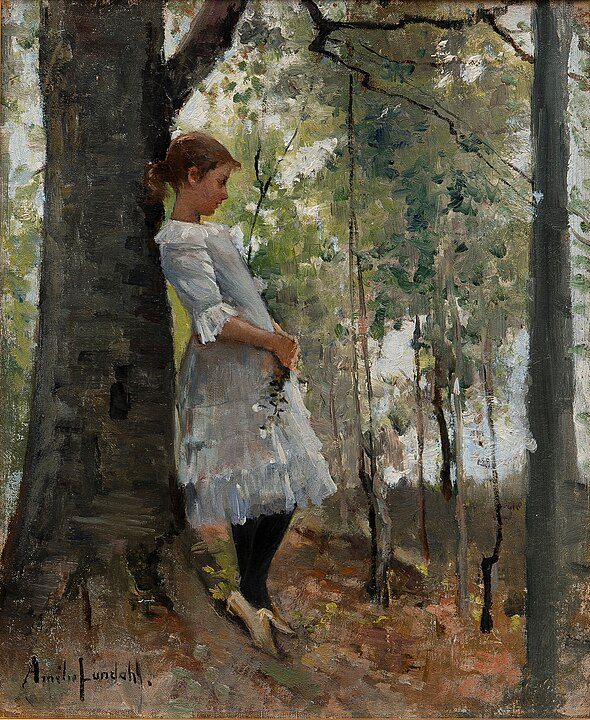
Amélie Lundahl (1850-1914) was a prominent Finnish artist known for her delicate and emotive paintings, particularly her portraits and genre scenes. She played a significant role in the Finnish art scene during the late 19th and early 20th centuries, contributing to the national identity and artistic heritage of Finland.
Amélie Helga Lundahl was born on May 26, 1850, in Helsinki, Finland, which was then part of the Russian Empire. She came from a Swedish-speaking family, a common trait among the educated classes in Finland at the time. Lundahl showed an early talent for drawing and painting, which her family encouraged. Her artistic journey began in earnest when she attended the Finnish Art Society’s Drawing School in Helsinki, where she received formal training.
In 1872, Lundahl moved to Paris, the epicenter of the art world during that period. She enrolled at the Académie Julian, one of the few institutions that accepted female students. Here, she studied under several notable artists, including Tony Robert-Fleury and William-Adolphe Bouguereau, who were instrumental in honing her skills and developing her unique style.

Lundahl’s work is characterized by its detailed realism and delicate use of color. She often focused on capturing the subtleties of light and shadow, which added a depth of emotion to her subjects. Her paintings frequently featured women and children, reflecting her sensitivity to the intimate and personal aspects of life.
One of Lundahl’s notable early works is “The Seamstress” (1880), a tender portrayal of a young woman sewing. This painting exemplifies her ability to capture the quiet dignity of everyday life, a theme that recurred throughout her career. The piece was well-received and helped establish her reputation in the Parisian art scene.
Parisian Influence and Achievements
During her time in Paris, Lundahl became part of a vibrant community of Nordic artists. She exhibited her works at the Paris Salon, one of the most prestigious art exhibitions of the time. Her paintings were appreciated for their technical excellence and emotional resonance. In 1889, she was awarded an honorable mention at the Exposition Universelle in Paris, a significant achievement that underscored her talent and the recognition she received in France.
Lundahl’s style evolved under the influence of the French art scene, particularly the Naturalist movement, which emphasized the depiction of everyday subjects with a high degree of realism. She also drew inspiration from the Impressionists, whose focus on light and color left a lasting impact on her work. Despite these influences, Lundahl maintained a distinctive style that blended realism with a gentle, almost poetic touch.
Return to Finland and Later Work
In 1889, Lundahl returned to Finland, bringing with her the techniques and insights she had gained in Paris. Her return marked a new phase in her career as she continued to paint, teach, and influence the Finnish art scene. She became an active member of the Finnish Art Society and contributed to the development of Finnish national art.

One of her significant works from this period is “Reading Girl” (1892), which portrays a young girl engrossed in a book. The painting is a fine example of Lundahl’s mature style, combining a realistic portrayal with a warm, intimate atmosphere. The delicate interplay of light and shadow, along with the meticulous attention to detail, showcases her mastery of her craft.
Lundahl’s influence extended beyond her own work. She was a mentor and teacher to many young Finnish artists, helping to shape the next generation of Finnish art. Her dedication to her craft and her students earned her a respected place in Finnish cultural history.
Challenges and Personal Life
Lundahl’s journey was not without challenges. As a woman in the male-dominated art world of the 19th century, she faced significant obstacles. Access to formal training, exhibition opportunities, and critical recognition was often limited for female artists. Despite these barriers, Lundahl persevered, carving out a successful career through her talent and determination.
Little is known about Lundahl’s personal life, as she was a private individual who preferred to let her work speak for itself. She remained unmarried and devoted much of her life to her art. Her commitment to her craft was evident in the meticulous care she took with each painting, striving for perfection in every detail.
Amélie Lundahl’s legacy lies in her contributions to Finnish art and her role as a pioneer for women artists. Her work is held in high esteem for its technical skill and emotional depth. Today, her paintings are part of the collections of several major museums, including the Ateneum Art Museum in Helsinki, which houses some of her most celebrated pieces.
Lundahl’s influence is also evident in the continued appreciation and study of her work. Art historians and scholars recognize her as a key figure in the Finnish art scene of her time, and her paintings continue to be admired for their beauty and sensitivity.
In recent years, there has been a renewed interest in Lundahl’s work, with exhibitions and retrospectives highlighting her contributions to art. Her paintings not only provide a window into the lives and experiences of her subjects but also reflect the broader cultural and social changes of her era.

Amélie Lundahl was a trailblazer in the Finnish art world, whose delicate and emotive paintings left a lasting mark on the cultural landscape. Her journey from Helsinki to Paris and back again is a testament to her dedication, talent, and resilience. Through her art, Lundahl captured the quiet dignity of everyday life and the subtle beauty of the world around her, creating a legacy that continues to inspire and resonate today. As we look back on her life and work, we are reminded of the importance of perseverance and passion in the pursuit of artistic excellence.




